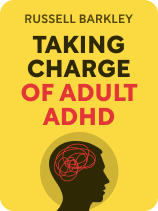

This article is an excerpt from the Shortform book guide to "Taking Charge of Adult ADHD" by Russell Barkley. Shortform has the world's best summaries and analyses of books you should be reading.
Like this article? Sign up for a free trial here.
Are stimulants the best kind of ADHD medication? What are the downsides of using stimulants?
It may seem counterintuitive to treat ADHD with stimulant medications. However, they don’t actually increase impulsive, reckless behavior.
Check out the advantages and disadvantages of ADHD stimulant medications below.
What Are ADHD Stimulants?
Dr. Russell A. Barkley explains that the medicines used to treat ADHD stimulate the parts of the brain that ADHD normally shut down. Remember, what people perceive as hyperactive, impulsive behavior is actually the result of the parts of your brain that govern inhibition being set on constant “snooze.” ADHD stimulant medications wake your inhibition centers so that they interrupt your reactivity and give you a fighting chance to pause, reflect, and think your actions through before you take them.
(Shortform note: Using stimulants to treat ADHD is so counterintuitive that even after their benefits were discovered, the treatment didn’t catch on for decades. In 1937, psychiatrist Charles Bradley first observed that stimulants had a calming effect on hyperactive children, as well as improving their behavior and schoolwork. Bradley’s discovery was largely accidental—he was trying to relieve his patients’ headaches with Benzedrine when he noticed its beneficial side effects. Bradley theorized what Barkley now presents as an accepted fact—that stimulants affect the regions of the brain responsible for inhibition and attention—but it took until 1956 for the medical establishment to catch on.)
The most well-known stimulant ADHD medications are Ritalin, Dexedrine, and Adderall. The latter two are classified as amphetamines—they increase the amount of dopamine produced by nerve cells in the brain. Ritalin and its equivalent medications are forms of the drug methylphenidate, which decreases the amount of dopamine your nerve cells reabsorb. Both types of stimulants have the same net effect—they increase the amount of dopamine in the parts of your brain that need it the most. An added benefit of these medications is that they provide rapid relief from symptoms, often within hours—which is particularly helpful in situations that require immediate symptom management, such as during stressful times at work or school.
(Shortform note: While Barkley highlights increased academic and career performance as evidence for stimulant medications like Adderall and Ritalin, they don’t benefit people without ADHD. A study in 2023 found that these drugs decrease productivity and cognitive ability in young adults without ADHD. Participants who took Ritalin required 50% more time than before to complete assigned tasks, while showing decreased accuracy and efficiency. The researchers concluded that for neurotypical people, these medications lead to increased motivation, but in a way that results in more erratic thinking and lower quality work. This shows another reason why an ADHD diagnosis is important before taking any medication.)
However, while stimulants offer significant advantages in treating ADHD, Barkley points out a few drawbacks. To begin with, stimulants only work as long as they’re in your bloodstream, so you have to take your medications regularly and consistently to effectively manage your symptoms. Also of concern are their potential side effects—some people taking these medications experience insomnia, headaches, nausea, and other symptoms. This is another reason why working with your doctor is important to determine the best course of treatment. Lastly, since stimulants can be abused, particularly by people without ADHD, the US regulates them as potentially addictive substances, making prescriptions sometimes hard to fill.
(Shortform note: Another problem facing ADHD patients, at least in the US, is an ongoing shortage of ADHD medications, including popular stimulants like Adderall and Ritalin, that began in 2022 and continues through the time of this writing. The shortage has been blamed on several factors, including increased demand, production difficulties, and supply chain disruptions. US regulatory agencies point to manufacturers’ failure to meet production quotas, but the issue is further compounded by limitations put in place by many insurance companies on how often and where patients can fulfill prescriptions.)

———End of Preview———
Like what you just read? Read the rest of the world's best book summary and analysis of Russell Barkley's "Taking Charge of Adult ADHD" at Shortform.
Here's what you'll find in our full Taking Charge of Adult ADHD summary:
- The various treatment options for ADHD in adults
- How to accept ADHD as a part of your life
- What ADHD can look like in undiagnosed adults






